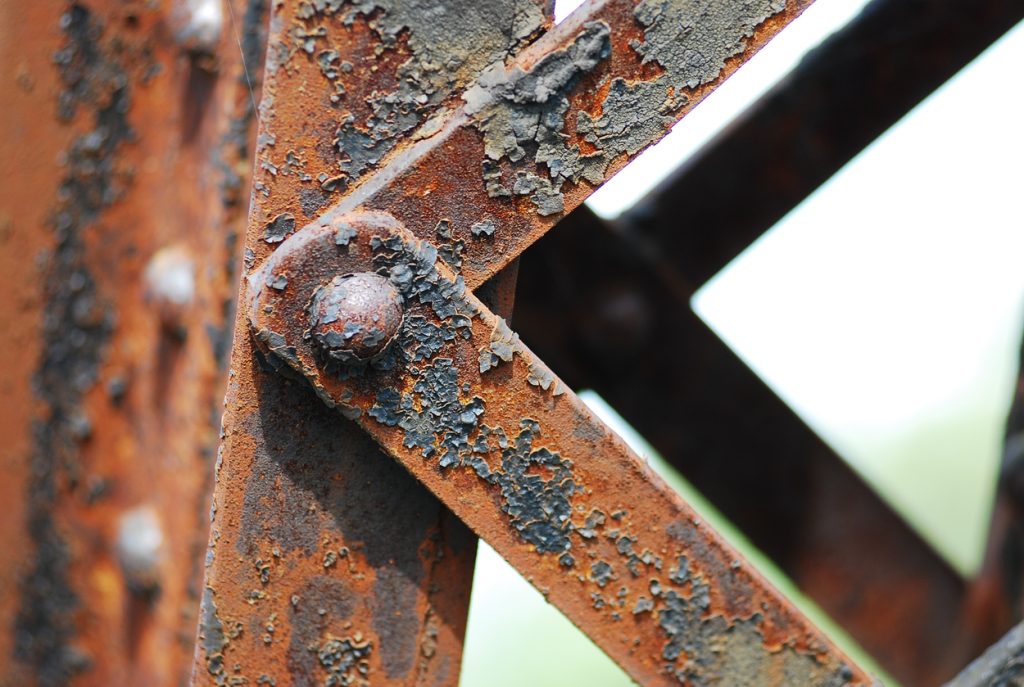Corrosion: what it is and its prevention through corrosion management systems

Corrosion is the chemical and physical deterioration of a material (typically metals and related alloys, but also polymers and ceramics) because of its chemical and/or electrochemical reaction with its surrounding environment. Corrosion represents a primary problem in a wide range of applications, from massive marine structures and aerospace constructions to electronics, including telecommunications, networking, electronic components, industrial and consumer electronics.
The global cost of corrosion exceeds $2.5-trillion annually, or 3% of global gross world product, while leading to an enormous and uncontrollable environmental footprint.
Efficient material protection is a major key to the advancements of future applications, including novel concepts of infrastructures (e.g., port quays, offshore structures, transmission pipelines, highway bridges, water transmission and distribution systems), as well as electronics (e.g., the so-called “More than Moore” electronics), or even space missions.
Corrosion mechanisms
Uniform corrosion is the effect of chemical and/or electrochemical reactions that cause the material to be consumed while forming oxides or other compounds over large visible areas. These reactions progressively and uniformly reduce the thickness of the materials, until they are dissolved entirely.
- Localized corrosion (often referred as “pitting corrosion”) is a form of deterioration which occurs in highly aggressive environments, such as marine and oil&gas. In these conditions, the protective passivation layer, which is formed because of uniform corrosion, is locally dissolved and the underlying material is exposed to uncontrolled corrosion.
- Galvanic corrosion (or “bimetallic corrosion”) is an electrochemical process that occurs when two dissimilar metals are electrically connected, while being in contact with (or immersed in) an electrolyte solution (including water). Due to the potential difference between the different metals, the “less noble” metal (the anode) corrodes faster than it would on its own, while the “nobler” metal (the cathode) corrodes slower than it does on its own, or even stop its corrosion.
Did you know facts
- The Statue of Libertyrequires regular maintenance checks because of the galvanic corrosion between the outer copper skin and the wrought iron support structure. Although it was thought to solve the problem through the application of an insulation layer of shellac between the two metals, the failure of that coating immediately caused a fast corrosion of the iron support, making the national symbol of the United States unsafe.
- Mars is often called the red planet because of its reddish color given by the high content of iron oxide (Fe2O3), also known as hematite or, more simply, rust. While Mars is a valuable place for exploration purposes and extra-terrestrial mining, the soil of this solar planet contains elevate concentrations of perchlorate compounds, whose solutions can cause severe corrosion on the car-sized rover exploring the red planet.
Corrosion is often the cause of devastating collapses of bridges, including Morandi Bridge in Genoa, whose corrosion monitoring and maintenance of cable has not been adequately performed.
Current methods for corrosion protection
As of today, the most efficient methods for corrosion protection are those referred as “cathodic protection”. The metallic structure is protected by establishing an electrical connection with a less noble metal placed in the same electrolyte (the “sacrificial anode”), which is corroded due to galvanic corrosion. The sacrificial anode is usually a metal (such as magnesium or zinc, in the case paints), whose corrosion could liberate dangerous metallic ions in the electrolyte, thus potentially putting a threat on the local wildlife.
Other methods include impressed current cathodic protection, that uses an electrical generator to impress a current to the metal-electrolyte system, which is opposed to that given by the corrosion mechanism. This method, although being the most efficient, is usually very expensive, requires extra-maintenance costs and is not applicable to already existing structures.
Corrosion protection in BeDimensional’s solutions
Corrosion protection is a topic of great interest for the modern industry that is always looking for innovative solutions to enhance material performance and characteristics. Thanks to their properties, such as excellent impermeability to corrosive gases and electrolytes, high mechanical properties, and chemical and thermal stability, Graphene and Hexagonal Boron Nitride incorporated within a polymeric protective coating can act as special anticorrosion additives.
Their two-dimensional morphology intrinsically represents an extraordinary physical barrier, making the path of the electrolyte through the polymeric coating “more tortuous”. They reduce the propagation of cracks within the polymeric matrixes, improving the reliability of traditional anticorrosion coatings and reducing the occurrence of localized corrosion phenomena.
The electrically insulating nature of Hexagonal Boron Nitride intrinsically eliminates potential sources of galvanic corrosion. Meanwhile, electrically conductive Graphene can maximize the utilization of sacrificial additives, such as Zinc, in both organic and inorganic coatings, reducing their content in the final formulations while maintaining adequate electrical connections between particles. Both these approaches are also useful to reduce the environmental footprint of the corrosion protection system.
Bedimensional’s solutions and products as B-LEAF coating and G-LEAF coating enable the transfer of the barrier and anticorrosion properties of few-layers Graphene and Hexagonal Boron Nitride to anticorrosion products such as traditional organic and inorganic coatings, as proved by our ready-to-use anticorrosion paint B-LEAF 11001.
Contact us for more information.